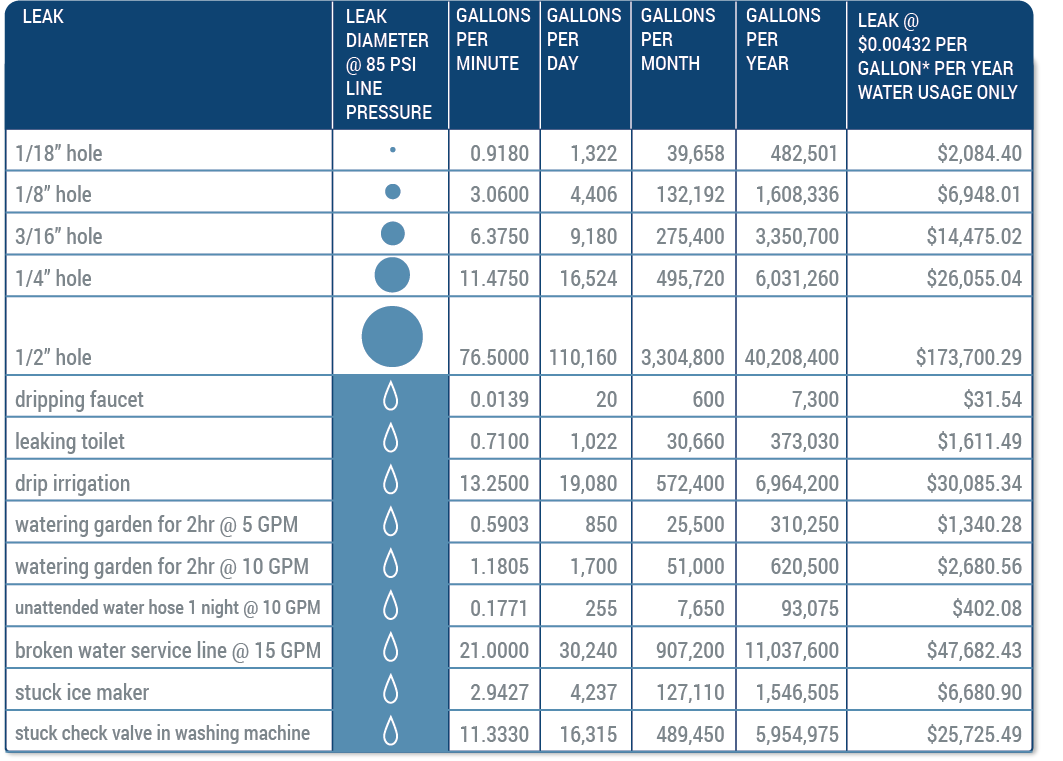Conservation
Water Conservation Measures & Practices
- Showers typically use less water than baths. Install a water saving shower head that uses less than two and a half gallons per minute. This will save water and energy. If you take a bath, reduce the water level.
- Leaky faucets and running toilets should be repaired as quickly as possible. See DT information below and “leak calculator” (link to the leak calc. page)
- Check toilets for leaks that may not be apparent. Add a few drops of food coloring to the tank. DO NOT FLUSH. If the color disappears in the bowl within a few minutes, the toilet fill or ball-cock valve should be adjusted to prevent water from overflowing the stand pipe or the flapper at the bottom of the tank should be replaced.
- Reduce the amount of water used for flushing the toilet by installing a 1.6 gallon flush toilet.
- Try to run the dishwasher and laundry washer with a full load. Do not save all laundry for one day. Space out laundry as much as possible. No more than 5 loads of laundry is recommended per day.
Gallons per day/Detention time
GPD (gallons per day) ratings are on your control box covers. Most homes have a 500 GPD treatment system. Larger homes may have 600, 750, or 1,000 GPD systems. These figures are based on the maximum loading water usage in a 24 hour period.
500 GPD = 20 gallons per hour
600 GPD = 25 gallons per hour
750 GPD = 31 gallons per hour
- 1,000 GPD = 40 gallons per hour
- Detention time (DT) is the time when no water is being used in the house and water is not being run through the system. DT is vital to the proper function of your system. Leaking toilets and other plumbing malfunctions can cause poor performance of your aerobic system, odors and rapid sludge build up. DT Gives the aerobic bacteria time to multiply and increase productivity.

